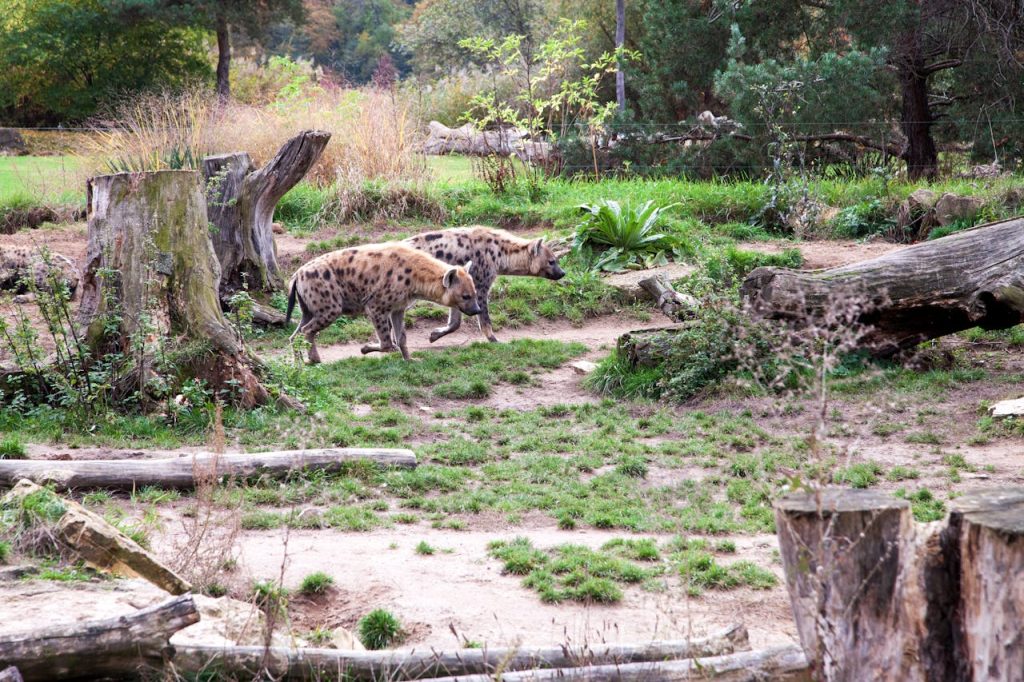Your cart is currently empty!
Zoo Discovery in Japan Reveals How Nature Still Outsmarts Human Understanding

For years, a quiet mystery unfolded behind the walls of a zoo in northern Japan. Two animals were placed together in what seemed like a perfect match, yet nothing went as expected. Their caretakers observed, adjusted, and waited, convinced that time would reveal the answer. But with each passing season, the story only grew stranger.

Whispers of confusion turned into years of questions. No one could have predicted what they would eventually find, or how it would challenge everything they thought they knew about nature itself.
The Long Wait for an Answer
When the two spotted hyenas arrived at Maruyama Zoo in 2010, they were celebrated as a promising pair that could help strengthen the zoo’s breeding program. For years, caretakers tracked every detail of their lives, hoping to understand why their efforts to reproduce failed. New diets were introduced, enclosures redesigned, and outside experts were consulted. Each change came with hope, but the results never shifted. Instead of harmony, the animals grew more aggressive, leaving staff and visitors equally confused about what was going wrong.

After more than a decade of questions, the zoo approved a full investigation that reached beyond surface observation. Under anesthesia, veterinarians performed ultrasounds, blood tests, and hormone analyses. What they discovered ended the mystery in an instant. Both Kami and Kamutori were male. The confirmation, reported by Agence France-Presse, was described by zoo officials as humbling yet illuminating. It revealed how even trained professionals could be deceived by nature’s intricate design and reminded researchers that certainty in science is often far more fragile than it seems.
The Illusion Nature Created
Among Africa’s great predators, the spotted hyena stands apart not only for its eerie laughter but for an anatomy that has puzzled scientists for generations. What appears at first glance to be a straightforward distinction between male and female turns out to be anything but. Female hyenas develop an organ that so closely mirrors the male’s that even seasoned experts have struggled to tell them apart. This pseudo-penis is used for everything from urination to giving birth, creating one of the most remarkable biological disguises in the animal kingdom.
Because of this, determining a hyena’s sex is far more complex than a quick visual check. Researchers rely on months of observation, hormone testing, and sometimes genetic analysis to be certain. These processes require time, funding, and coordination, and they are not always applied when animals are transferred between facilities. As zoological studies have shown, misidentification has occurred in several zoos around the world. National Geographic reports that this unique trait evolved from the species’ matriarchal society, where females hold power and aggression defines rank. What began as an adaptation for survival now doubles as nature’s most convincing trick, one that continues to humble even the most experienced scientists.
The Bigger Picture Beyond the Enclosure
What happened inside Maruyama Zoo mirrors a larger story unfolding across continents. In the wild, spotted hyenas are not just scavengers but crucial architects of ecological balance. They clear carcasses, control prey populations, and help maintain the rhythm of life on African plains. Yet their landscapes are shrinking, carved up by farms, roads, and expanding towns. Each intrusion brings them closer to humans, and those encounters often end in conflict. When a hyena attacks livestock, the response is usually swift and fatal, a cycle that conservation groups identify as one of the leading causes of population decline in several regions.

Their rarity in captivity adds another layer of complexity. Unlike lions or tigers that draw attention and resources, hyenas are often overlooked, even though every individual counts in maintaining genetic diversity. A single error, such as misidentifying an animal’s sex, can ripple through breeding programs across the globe. The International Union for Conservation of Nature classifies spotted hyenas as of Least Concern, yet estimates suggest only 27,000 to 47,000 remain in the wild, with some areas in West Africa already showing severe declines. Regional experts now stress that global cooperation, accurate records, and shared data are essential to sustaining not only captive populations but also the fragile balance of their natural habitats.
Lessons on Seeing Beyond Assumptions
The revelation at Maruyama Zoo became more than a correction in a zoo’s records. It became a mirror reflecting how easily certainty can mislead. For more than ten years, a team of experts studied two hyenas and drew logical conclusions from everything they saw. Their experience told them one thing, but reality revealed another. The moment the truth came out, it exposed something deeper about human perception and the way the mind fills in gaps when information feels familiar.
In science, assumptions often grow from patterns that once proved reliable. Yet, as this case shows, even those patterns can conceal truth when nature refuses to fit inside them. The biology of spotted hyenas challenges what most mammals teach us about gender, hierarchy, and behavior. That complexity makes them not only fascinating subjects of study but also powerful reminders that knowledge grows through humility.

The lesson extends beyond zoology. It speaks to how humans interpret difference, how often we rely on appearances, and how easy it is to confuse what looks right with what is true. The story of Maruyama’s hyenas reminds us that understanding takes time, and that real insight begins only when curiosity replaces assumption.
Rethinking the Boundaries Between Humans and Animals
The events at Maruyama Zoo do more than highlight a rare biological puzzle. They reveal how human understanding is often shaped by the same limitations that guide animal instinct. For years, the zookeepers studied the hyenas through the lens of what they already believed to be true. Every behavior, every interaction, seemed to confirm their expectations. Yet nature has a quiet way of reminding us that certainty can be fragile. When the truth finally emerged, it forced scientists to confront how limited our understanding of other species can be.

This story also brings to light how the relationship between humans and animals is more connected than many realize. Studies in animal cognition continue to show that other species possess forms of communication, empathy, and intelligence that echo our own. By projecting human definitions of gender, dominance, or emotion onto wildlife, we risk overlooking the patterns that belong uniquely to them. The misidentification of the hyenas is not simply a scientific error; it is a moment that invites humility and reflection.
In a broader sense, the Maruyama case reminds us that to study life is to be constantly corrected by it. The more we learn about animal behavior, the clearer it becomes that understanding demands openness rather than control. Nature does not exist to fit within human categories. It invites us to expand our view, to listen more carefully, and to recognize that our place within the living world is one of participation, not superiority.
How Curiosity Keeps Science Honest
The confusion at Maruyama Zoo shows that progress in science does not always begin with discovery but with the courage to question what seems obvious. For years, the animals were observed through routine studies and accepted facts, yet no one thought to reexamine those assumptions until every explanation failed. What followed was not embarrassment but a reminder of why curiosity remains the foundation of every scientific pursuit. When researchers finally confirmed the truth, they also proved that honest inquiry often starts where certainty ends.
In zoology and beyond, curiosity protects knowledge from becoming rigid. It encourages experts to look again, to ask new questions, and to challenge systems that depend too heavily on habit. The case of the hyenas illustrates how science moves forward through attention, not arrogance. Each mistake corrected becomes part of a larger commitment to accuracy and understanding. Without curiosity, the world would stay confined to first impressions. With it, even the most familiar creatures can reveal something entirely new.
What the Hyenas Taught Us About Seeing Clearly
The story of Maruyama’s hyenas is more than a tale of mistaken identity. It is a quiet lesson about perception, reminding us that even with all our instruments and intelligence, human understanding remains incomplete. The keepers searched for answers in behavior, anatomy, and instinct, but the truth emerged only when they paused to question their own certainty. That moment turned confusion into clarity and revealed that knowledge grows not from confidence, but from humility.

Nature has always been the world’s most patient teacher. It shows that truth is rarely hidden; it is simply waiting for us to notice what we have overlooked. The discovery in Sapporo continues to echo through scientific circles as a reminder that even the smallest revelations can shift the way we see the world. Each observation, each correction, strengthens the bond between human curiosity and the mysteries of the living world. To see clearly is not to know everything, but to remain willing to learn.
Featured Image from Ozizo, CC0, via Wikimedia Commons
